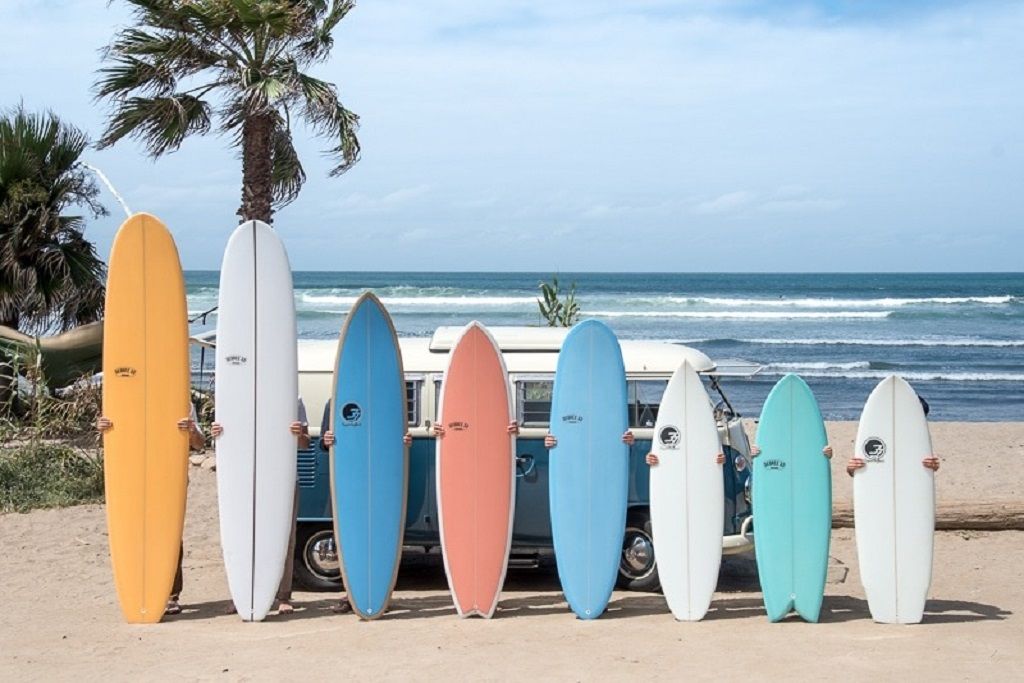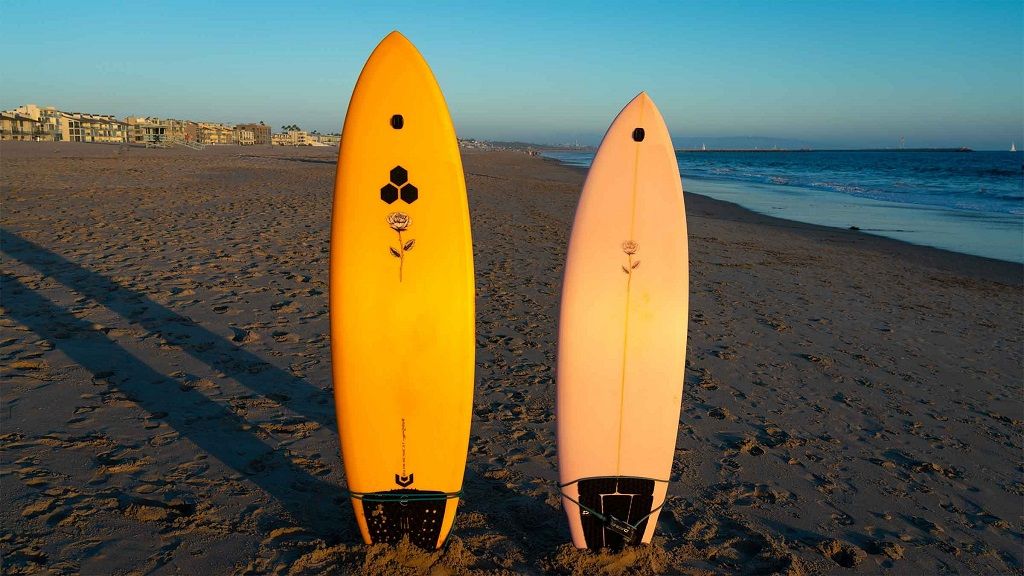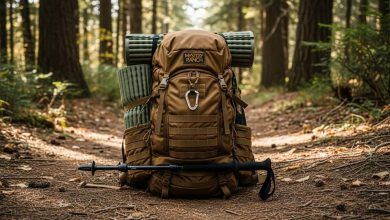
Custom vs Stock Boards: What’s Best for Surfing
Choosing the right surfboard is more than just picking a color or brand. It’s a deeply personal decision that affects how you ride, progress, and connect with the ocean. In the heated debate of custom vs stock boards: what’s best for surfing, each option offers a unique set of advantages, drawbacks, and key considerations that every surfer, whether beginner or seasoned, should understand.
Understanding the Basics: What Are Custom and Stock Surfboards?
Before diving into opinions, let’s define the two.
- Stock surfboards are mass-produced by surfboard brands based on popular templates and dimensions.
- Custom surfboards are tailor-made for an individual surfer’s body type, skill level, wave preference, and goals.
Most surf shops carry a wide range of stock boards, making them easily accessible. On the other hand, custom boards require a consultation with a shaper and usually take several weeks to complete.

Accessibility and Cost: The First Major Divide
Stock boards win in terms of accessibility. Walk into any surf shop, and you can pick one off the rack. For many beginners, this instant gratification is key. Stock boards are also generally less expensive, ranging between $400 and $800 depending on the brand and model.
Custom boards, however, can cost anywhere from $700 to $1,200. The increased price comes from the labor-intensive design process and personal attention from experienced shapers. Yet, for intermediate to advanced surfers, that added investment often translates into noticeable performance improvement.
According to a 2023 Surfline report, over 65% of surfers under the age of 30 start with stock boards due to price and availability.
Performance: Where Custom Boards Shine
Every wave is different, just like every surfer. Stock boards follow generalized templates, which work decently for many but exceptionally for few. They lack the nuanced tweaks needed to match an individual’s weight distribution, riding style, and preferred breaks.
Custom boards, on the other hand, are precision tools. A skilled shaper will study your surf footage, discuss your goals, and design a board that complements your strengths while improving your weaknesses.
A study published by The Inertia found that 78% of experienced surfers reported noticeable improvements in wave count and maneuverability after switching to custom boards.
Learning Curve: Is Simplicity Better?
For beginners, stock boards offer consistency and simplicity. Since they’re based on proven templates, new surfers can rely on predictable performance while learning basic maneuvers and ocean awareness. Plus, resale is easier. Most used stock boards maintain their market appeal.
Conversely, custom boards may overwhelm beginners. Without enough surf experience, you might not know what you actually need. Choosing rocker, rail shape, fin setup, and volume without that knowledge can lead to costly mistakes.
However, if you have access to a skilled coach or shaper, a beginner-level custom board can help you avoid bad habits by offering the right buoyancy and balance from the start.
Durability and Quality Control
Stock boards, especially those made overseas, may suffer from inconsistent quality. Many mass-produced boards use cheaper materials to keep costs down. As a result, they often dent or delaminate faster, particularly under aggressive use.
Custom boards usually come with higher-grade materials and better craftsmanship. Most custom shapers also offer post-sale services like repairs or refinements, something rare with stock boards.
Brands like Lost, Firewire, and Channel Islands offer both stock and semi-custom options, combining accessibility with some level of personalization. But these hybrid models may not go far enough for surfers with very specific needs.
Surf Goals and Progression
The choice between custom and stock should reflect your surfing goals. If you’re a casual surfer who hits the waves a few times a month, a good-quality stock board may be all you need. It’s cost-effective and gets the job done.
However, if you’re training for competitions, chasing big waves, or simply obsessed with progression, a custom board becomes essential. You’ll squeeze more performance from your session and develop faster.
Professional surfers like John John Florence and Carissa Moore often work closely with shapers to refine their boards before contests. Their setups evolve based on wave conditions, injury status, and technical needs.
The Environmental Factor
Sustainability matters. Mass-produced stock boards usually have a higher carbon footprint due to overseas shipping and use of polyester resins. In contrast, many custom shapers now offer eco-conscious materials such as epoxy resin, recycled foam blanks, and flax cloth.
Brands like Firewire have also embraced greener production lines, offering both stock and custom eco-boards that perform at the highest level.
Supporting a local shaper not only reduces emissions but also strengthens your surf community. It’s a win-win for eco-conscious riders.
Final Verdict: Who Should Choose What?
The battle of custom vs stock boards: what’s best for surfing doesn’t have a universal winner. It depends entirely on your level, goals, budget, and commitment to progression.
Choose a stock board if:
- You’re a beginner or casual surfer.
- You want an affordable, ready-to-go option.
- You’re experimenting with different shapes.
Choose a custom board if:
- You surf regularly and want to improve.
- You have specific needs that off-the-rack boards don’t address.
- You want a long-term investment with tailored performance.
Ultimately, many surfers build a quiver that includes both. A reliable stock board for daily surf and a high-performance custom for bigger days or specific breaks can offer the best of both worlds.
Read More Also: Six Popular Project Management Software to Know
FAQs
Can beginners use custom surfboards?
Yes, but only if guided by a knowledgeable shaper. Otherwise, the risk of choosing the wrong specs is high.
Are custom boards always better?
Not always. They’re better when tailored to experienced surfers. Beginners may not notice the difference.
How long does it take to get a custom surfboard?
Usually 3 to 6 weeks, depending on the shaper’s backlog and material availability.
Do custom boards last longer than stock boards?
Often yes, especially if built with premium materials and craftsmanship.
What’s the resale value like?
Stock boards are easier to resell. Custom boards may have limited appeal unless perfectly sized.
Can I modify a stock board to fit me better?
You can adjust fins or traction, but core elements like volume and rocker remain fixed.
Are hybrid options worth it?
Yes, semi-custom boards offer a middle ground—mass-produced with room for minor customization.
Read More Also: 9 Things to Do in Uruguay: Experiences That Marked Us
Final Thought
The decision between custom vs stock boards: what’s best for surfing is not black and white. It’s about understanding your surfing journey and matching your board choice to it. If you’re just starting out, a good stock board gets you in the water faster and cheaper. But as your skills grow, investing in a custom board could unlock your full potential. Evaluate where you are, consult a pro if needed, and make the decision that aligns with your surfing dreams.




